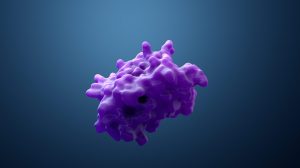Definition
noun, singular: gram-positive bacillus
A group of rod-shaped bacterial cells that appears violet through Gram’s method
Supplement
Gram’s method has become an essential laboratory diagnostic tool for the rapid identification of a bacterial species. Through this method, the observer can classify if the bacterial species is a gram-positive or not. Bacterial cells that stain violet or bluish in color under the microscope are described as gram-positive. This indicates that they resist the red dye counterstain. Those that appear pinkish under the microscope are described as gram-negative, indicating that they have taken the counterstain.
Gram-positive bacteria are not able to take the color of the counterstain because of their thick peptidoglycan layer. This layer of peptidoglycan chains forms a thick and rigid cell wall. This cell wall becomes dehydrated when treated with a decolorizing agent in Gram’s method. As a result, the primary dye cannot readily diffuse and is retained in the cell. Thus, they appear violet or bluish under the microscope. Despite the thick cell walls of gram-positive bacteria, they are generally more susceptible to antibiotic treatments than gram-negative bacteria.1
Based on gram staining results and cell morphology as observed under the microscope, gram-positive bacteria may be gram-positive cocci or gram-positive bacilli (rods). Gram-positive bacilli appear rods in contrast to cocci that are spherical in shape. Gram-positive bacilli include the Bacillus spp., Clostridium spp., Listeria spp. and Corynebacterium spp.
See also:
Reference(s):
1 Madigan M; Martinko J (editors). (2005). Brock Biology of Microorganisms (11th ed.). Prentice Hall.







